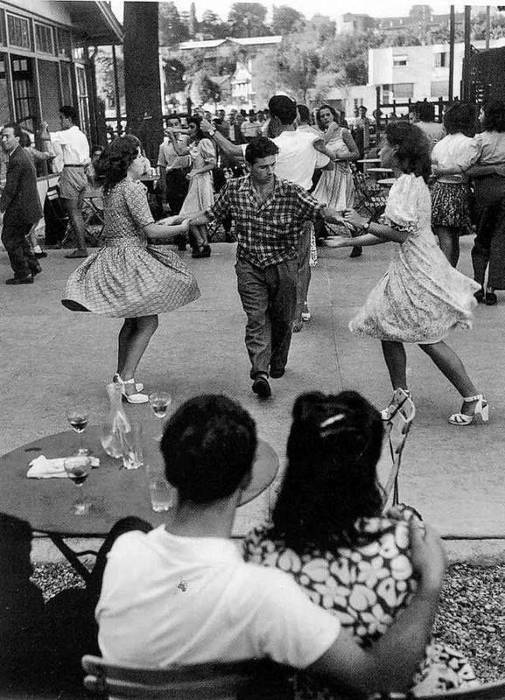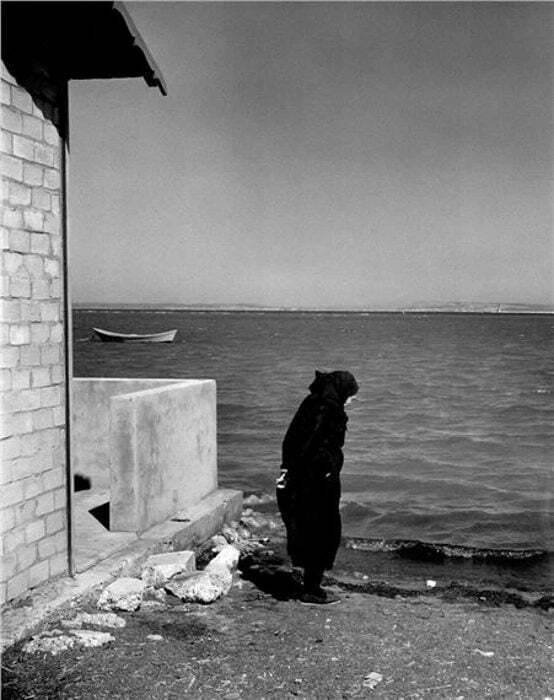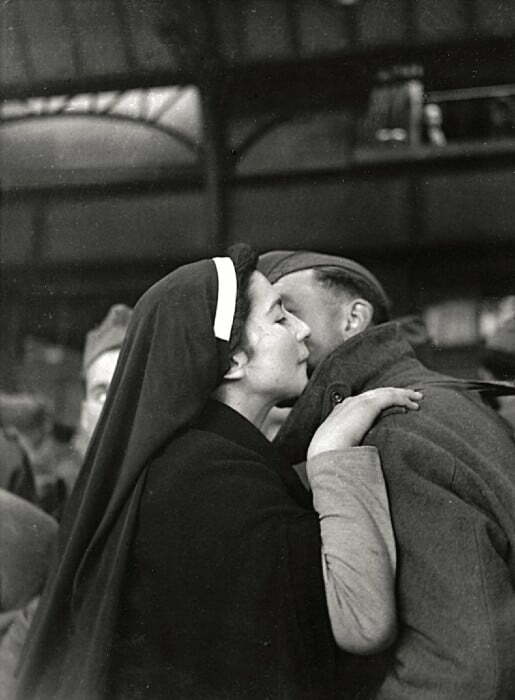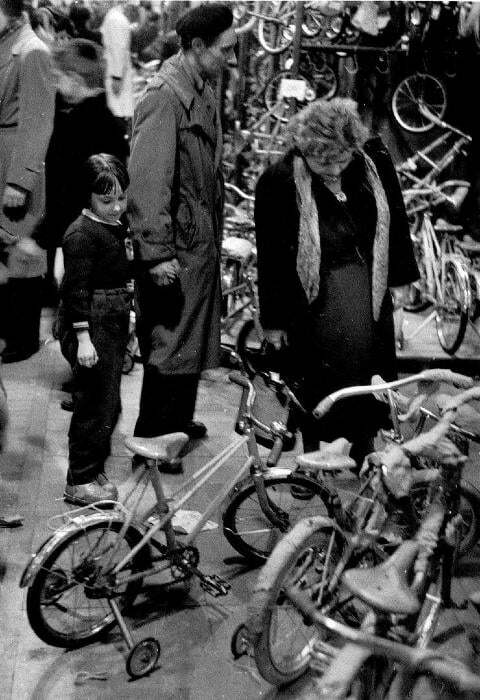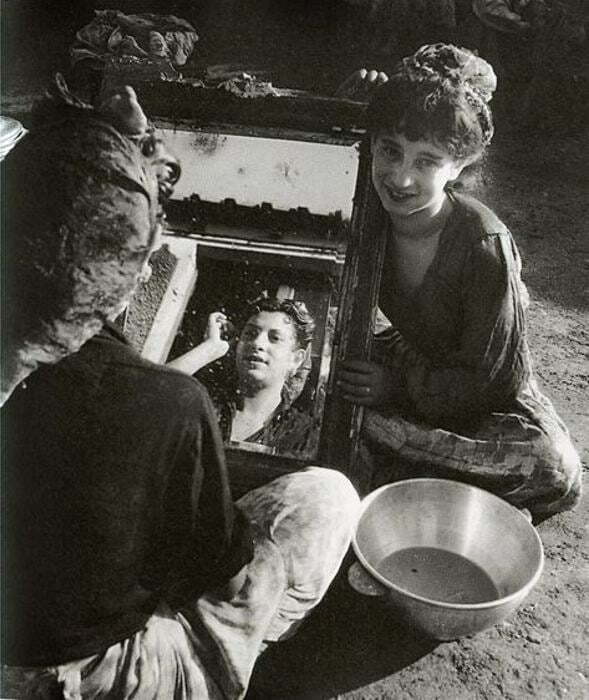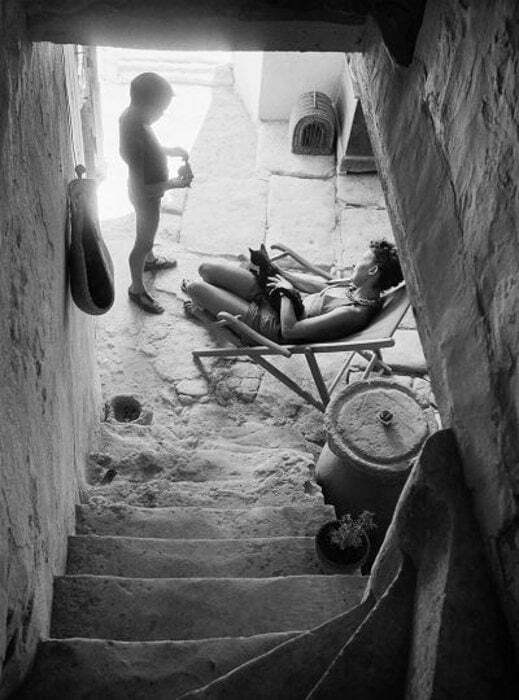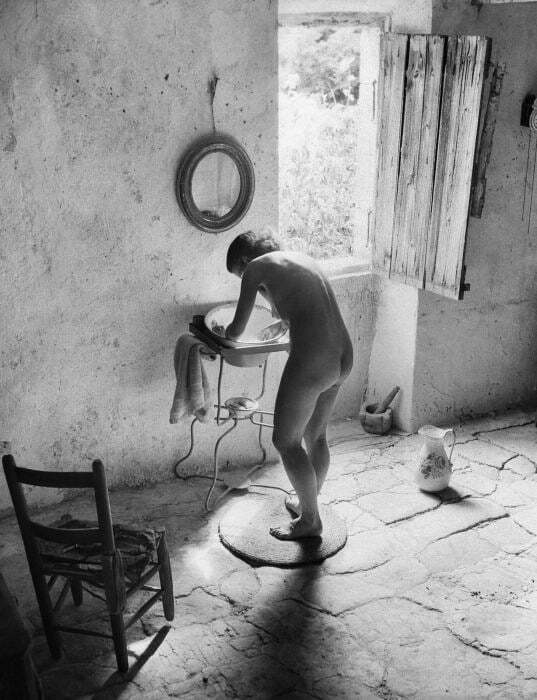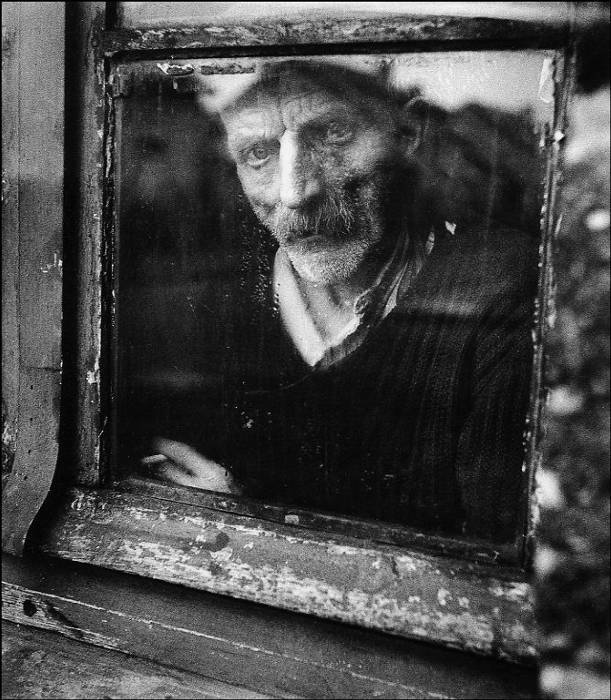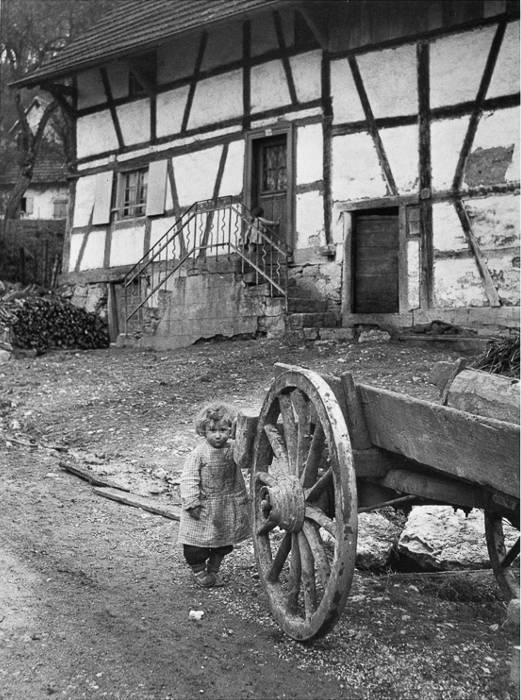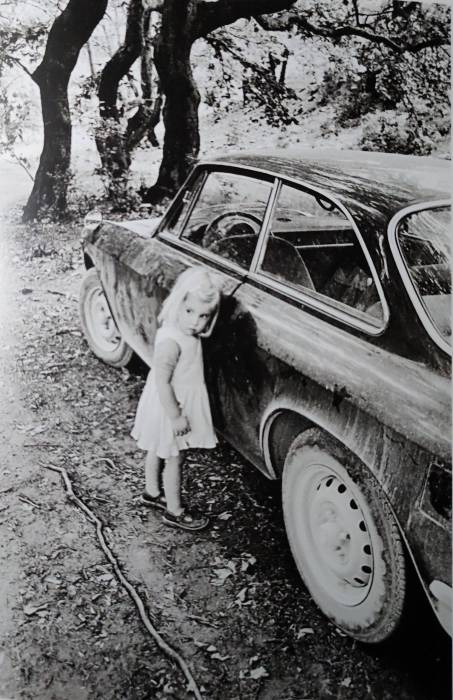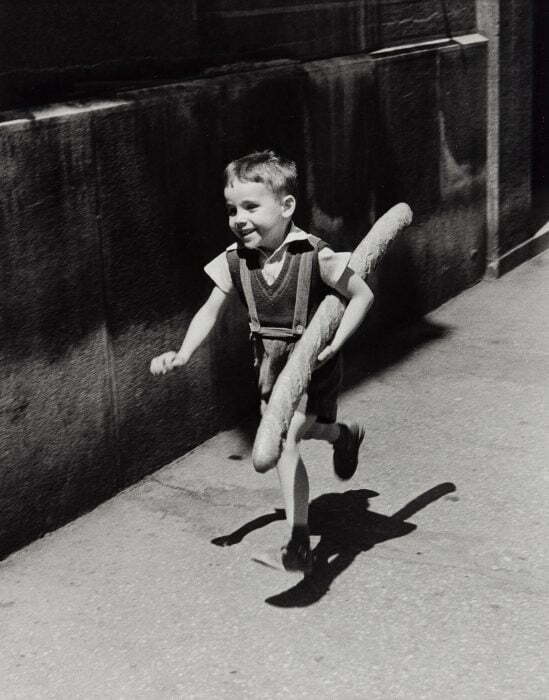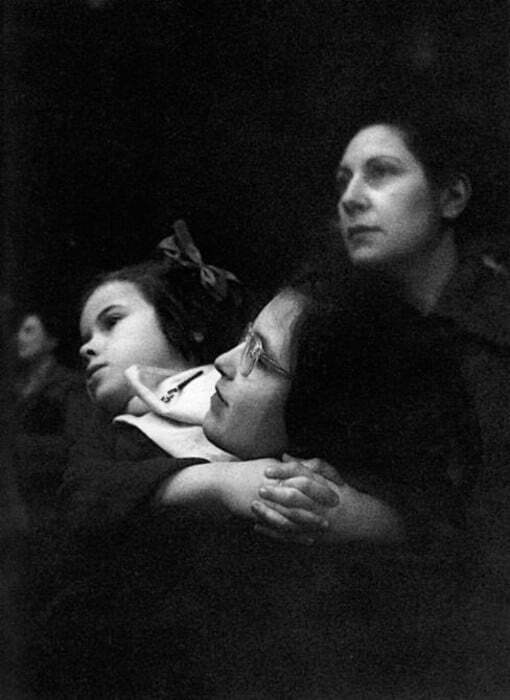willy ronis, at the age of twenty-two he had to change the violin for the camera. Born in 1910 in ParisHe was the son of refugee parents. His father, a Jew from Odessa and his mother, a Lithuanian. He early directed his inclinations toward music, following the dictates of his mother, who gave piano lessons. Her father, meanwhile, ran a photography studio in Montmartre.
Upon returning from military service in 1932, WillyDue to his father's illness, he had to ayudar en el negocio. This was a period of total learning, profitably receiving the teachings of his father.
On the death of his father, in 1935, closed the studio And started to Freelancing, doing errands. In 1946 he joined to Robert Doisneau, Brassai YErgy Landau, among others, in the Rapho Agency. He started to to teach photography in 1957.
has had countless awards Y awards For his job. Passed away Almost a hundred years old in September 2009.
In the book, willy ronis, selects fifty-two photographs, explaining one by one how the that day, The instant embodied.
But the book is much more than just footnotes to photos. reflects an entire world of sensations around them. The origin of each, the impressions of the author at the time of making them, the connections and fundamentally, the inside world of willy ronis. It is also to appreciate a literary prose that moves at times. A collection treasure without a doubt, joining forces, the jointly edited by editorial Peripheral Y Errata Nature.
“That day I stood up on a chair. She had gone to Joinville to do a report on the picnic areas for The Figaro, which at that time published a quarterly album on coated paper with texts by artists, writers and poets”.
Willy Ronis “Aquel día” Periférica & Errata Naturae, 2021 —Las sucesivas citas tienen como referencia, al mismo autor y libro—.
Explain Willy how to capture the whole of the dance, he had the idea of climb on a chair. She was interested in a boy who danced “like a god”, in her words. She motioned for him to come over while he danced, and he instantly complied. At the end of the dance she noticed that the boy had a slightly crooked foot, but when he danced nothing was noticeable. The girl on the right sent him a letter three years ago - supposedly in 2003 - telling him how he was moved to see the photo appear from time to time in the newspapers. The other girl was her childhood friend, while the boy was never seen again.
“Something in her immediately referred me to Greece, a kind of fatum there present, invisible, around her, which she accepted, exchanging a few silent words with that presence. She moved me a lot.”
Doubt Willy whether that magic that he perceived at the moment of pressing the shutter, continues to survive when printing the photo:
"When the image is printed on paper, will that magic that I perceived still be alive, palpable?"
Sometimes the opposite has happened to him and he has kept the photos for himself, but this time he was right.
recounts Ronis, as the Compañía Nacional de Ferrocarriles had commissioned a report from him. Walking through the crowded station, he powerfully caught her eye. nurse what should say goodbye of prisoner whom he had treated in the convoy:
“I told myself that the prisoner was arriving in Paris and that someone was most likely waiting for him, someone who had been waiting for him for a long time. But I don't really know that, I imagine it, I invent it, I put it together, he let me be carried away by my daydreams; Only at the precise moment that I developed and printed this photo did the woman leave me in shock, because her face had a tremendously emotional expression, complicit and modest at the same time”.
Our photographer returns to weave another story around her, around them. In the end, he did not deliver the photo to the Company in case someone could recognize them and the state of delivery in which they were found. He has waited thirty years to present it, when already, as he says, “the crime has prescribed”. Reflect on those brief moments in which he has had a intuition, sometimes, disturbing:
“I like to catch those brief moments of chance, where I have the feeling that something is happening, without really knowing what, and that something disturbs me tremendously —even today I get a lump in my throat when I remember—, but I don't I would like this emotion to give rise to misunderstandings.”
explains us Ronis, like walking along the boulevard Haussmann, he found a bicycle stand and he was touched by the little scene what was before him:
“Apparently it was a nondescript moment, very simple: a father with his daughter in front of the bikes. Now, if we look closely, we see that the father is dressed in a very humble way, he must have taken his daughter to buy her a present, but it is obvious that it will be difficult for him to find something really nice, it seems that the girl, with that expression and the way he looks at it, he wants the bike with all his might and at the same time renounces it, knowing that he will never be able to own it”.
The scene moves him, which he says broke with the trend of cheerful photographs that he had been taking at that time. It reminds me a lot of this photo willy ronis to the iconic neorealist film Vittorio de Sica, "Bike Thief", pero en este caso, al padre le roban la bicicleta, sustento principal de su trabajo.
A week later he again photographed a man alone in the middle of a happy crowd, except for him, who seemed sorrowful. He lasted a few moments, while he photographed it. Looking back, he had disappeared. The photo corresponds to the image above.
“That day, among the gypsy community that had settled in Montreuil and lived there permanently, if I'm not mistaken, on the outskirts of the city I ran into this group of girls who were grooming themselves. Her gestures, the way one of her would fix her hair or put it up while her friend held the mirror for her, I was immediately seduced.”
Ronis made a long report on the bohemians of Montreuil. He mentions that they used to make a living as tinsmiths. I highlight the following reflection on the assessment of unprepared moments in his photos:
“Throughout my entire career as a photographer, it is the totally random moments that I have liked to capture the most. They communicate my vision of things much better than I would myself."
Through the camera he communicates his vision of things better than if he expressed it in words, according to him, because the descriptions of the photos in his texts are exceptional. In his world, in his photographs, he has had disappointments, but also joys, mainly when chance intervenes favorably
“When life sends you a surreptitious signal of recognition, when it thanks you. There is then a great complicity with chance, which one feels very deeply. And he thanks you too. It is what I call the joy of the unexpected. Tiny situations, like pinpoints. Just before there was nothing, and right after there is nothing. That is why it is necessary to always be prepared.”
It was the second summer, says the photographer, who spent in Gordes with Marie-Anne, in a ruin they bought in 1947:
“I remember that, here, I was about to come down from the room where I had precisely taken that photo —Provençal Nude—, and suddenly the calm of the moment invaded me, framed in the afternoon. The beauty of him, almost majestic. We had brought our cat from Paris, who was sleeping on Marie-Anne's lap. I was at the top of the stairs. The deteriorated state of the soil is still visible.
The photograph he cites, taken in the upper room, days before his wife Marie-Anne, Provencal Nude, is the "pictorial" following image:
The author concludes, regarding Gordes' vacation home and the siesta photo, with a certain nostalgia of past, of that time:
“We spent every vacation in this house, but I got rid of it when I lost Marie. I really like this summer time. And there, at the foot of the stairs, was that jar in which we kept anything, especially woolen clothes, scarves, gloves, so that they were protected from moths and used when we went in winter. And also there in the background, you can see the cat's basket”.
The photo and what the author tells, overwhelms. He had been commissioned to report on mining. They urged him to visit a silica miner living in Lens who had only a short time to live:
“The man was stationed by the window, on the ground floor. He was looking down the street. He hardly ate anymore. But he smoked, he smoked a lot. He smoked all the time. He was only forty-seven years old. Within a few months, he died."
He says that he took another photo of the miner outside the house and that photo was used, without his permission, in a campaign. The result was that he left the agency and started working on his own, to have the control of your photos. That her work should not be treated as merchandise at the whim of unscrupulous people:
”A photo is not a concrete block with which to build whatever one wants. I feel completely responsible for the use that is given to my images.
“That day, walking through the Alsatian countryside, I saw this girl, all shy, huddled against the wheel of the cart of her parents, peasants. I loved that reflex act of modesty; of shyness”.
Thirty years later he saw a scene with another girl that reminded him of this little girl hiding in the car. As a result, she reflects on the relations between one and other photos, with the chance intervening, again:
“I have memories of all my photos, they all make up the fabric of my life and sometimes, of course, they beckon to each other over the years. They respond, talk, weave secrets. Now, I am one of those photographers who works a lot from chance, from chance, like so many others”.
The photo you were referring to Ronis, in relation to the previous one of the girl in the car, it was the one taken from the girl Daphne (top photo). He made it near Athens at the home of a Greek photographer friend. She had two children, they were talking peacefully, but he saw the girl next to her father's car and instinctively grabbed the camera, remembering the one taken thirty years earlier:
“As soon as I saw it, I experienced a strange confusion and grabbed the camera. An inner force told me to capture that moment. I got up, went to the girl and, suddenly, pressing the shutter, I remembered another moment, in 1954, far away from there, in Alsace”.
The photo was taken from his house, from the ground floor, in a quiet passageway where people stopped to chat. In her, Ronis get this intimate episode, as sneaking through the interstices:
“I began to observe them; they couldn't see me because my house was dark. They, on the other hand, were very well lit by the streetlights of the passage... I thought it would be the end of a leave, that the boy was saying goodbye to his girlfriend, that they were a little sad but at the same time they knew that they loved each other, they showed it to her modestly, looking into each other's eyes. The meeting is very discreet thanks to the folds of my curtains, which barely hide them. But, anyway, let's imagine... It's always the same mechanism: something impresses me and I tell myself that it deserves a photograph. Which may be worthy of posterity."
The above photo of the boy running with the bread under his arm with enthusiasm, has been one of his most popular photos. Willy recognizes that contrary to almost all of his work, this photo I was a little prepared. They commissioned a report “See Paris again”, and thought of the iconic Parisian bread. She saw a boy waiting in line at a bakery with his grandmother. The author tells us how he asked his grandmother if she could photograph the child running with the bread:
“The little boy bought the bread and ran off in an extremely funny and animated way. I forced him to repeat the run three times, a stretch of a few meters, to get the best shot. And it turned out to be a complete success: posters, postcards have been made with it, and I know that it has also been seen abroad, in taverns and bakeries in New York, and in a considerable number of European capitals”.
The top photo, which has the composition as if of a picture it was - not surprisingly, the photographer quotes Rembrandt —, it is a natural scene taken on a Christmas day. clarify Ronis, who saw a mother with her two daughters in front of the windows of a department store and was overwhelmed by the scene:
“Seeing these three faces I thought of Rembrandt's faces under that chiaroscuro that veils them and illuminates them at the same time. They are isolated from the street. I didn't alter anything, everything had this blackened tone around it... I've taken a lot of pictures around department stores, but this is my favorite. I like this lighting that gives a certain nobility to an everyday scene, a certain magic.”
tells us Willy, who knew the atmosphere of Saint Germain, but this neighborhood of La Huchette, no. En él, con la cámara al hombro, no se fijaban los muchachos, porque tenía 47 años. Los chavales frecuentaban Le Caveau and other places where they listened jazz of New Orleans and there were live performances, such as those of the renowned musician, Maxim Saury:
“I remember Maxim Saury, a very appreciated jazzman. The young people came in, went out, talked, a very happy atmosphere reigned, and I noticed that something was growing inside them, a sort of rebellion that was already there ten years before 1968... I had Notre-Dame in the frame, which was the emblem of the neighborhood. I was with them for about a month, but I knew that no newspaper would buy my photos, since almost all of them were minors. I did it for pleasure, to give myself that pleasure.”
And the clarinettist and conductor, Maxim Saury, estas canciones del disco: Maxim Saury: L’age d’or du jazz, ilustran la atmósfera jazzística de finales de los cincuenta, en París. En el disco se puede apreciar su jazz melódico, en combinación con otras piezas en las que se distinguen sus inclinaciones por el dixieland and he swing —more in the vein that was heard in the La Huchette venues, as described Ronis—, following the influences of the master, Sidney Beckett; no es de extrañar que se incluyan en el disco, buena parte de composiciones suyas.
“Ce jour-là” Willy Ronis, Mercure de France, 2006 ⬈
“That day” Willy Ronis ⬈
Editorials Periférico and Errata Naturae ⬈
Translation by Regina López Muñoz
152 Páginas
©️ Photographs of the article, heirs of willy ronis, Mercure de France, Peripheral Y Errata Nature



